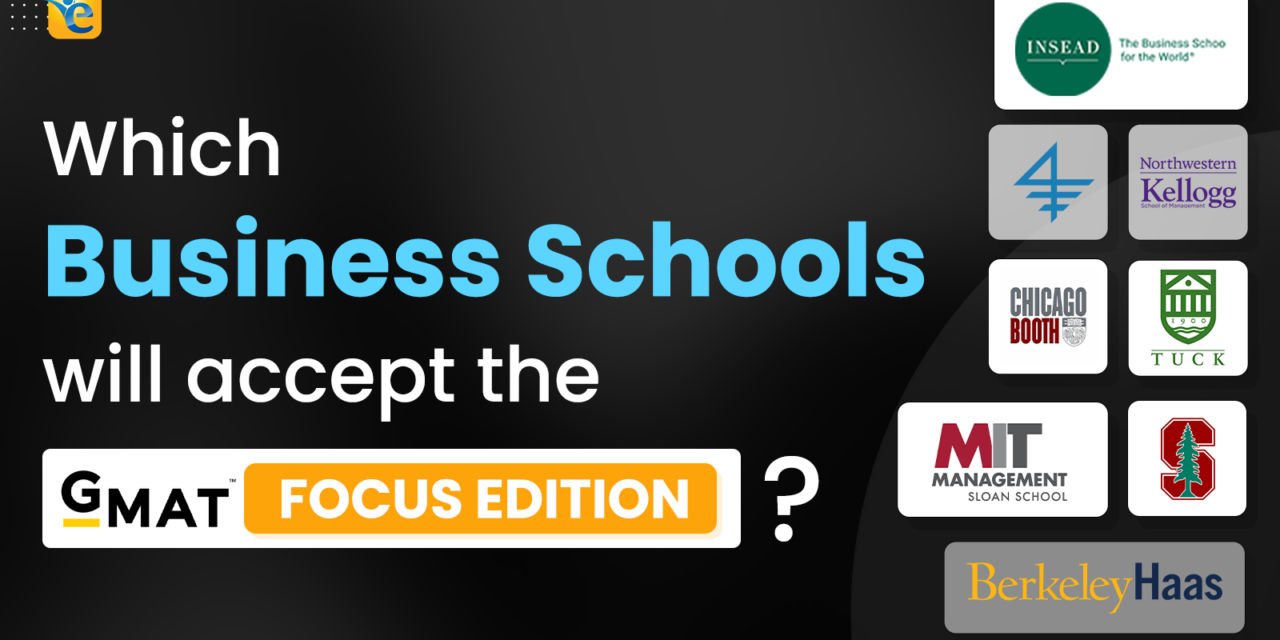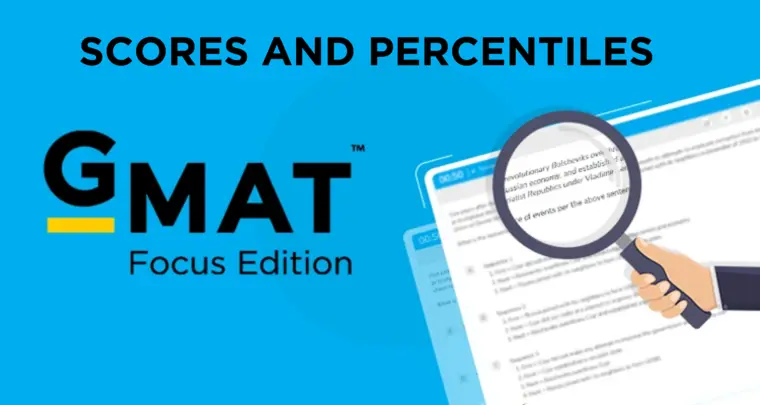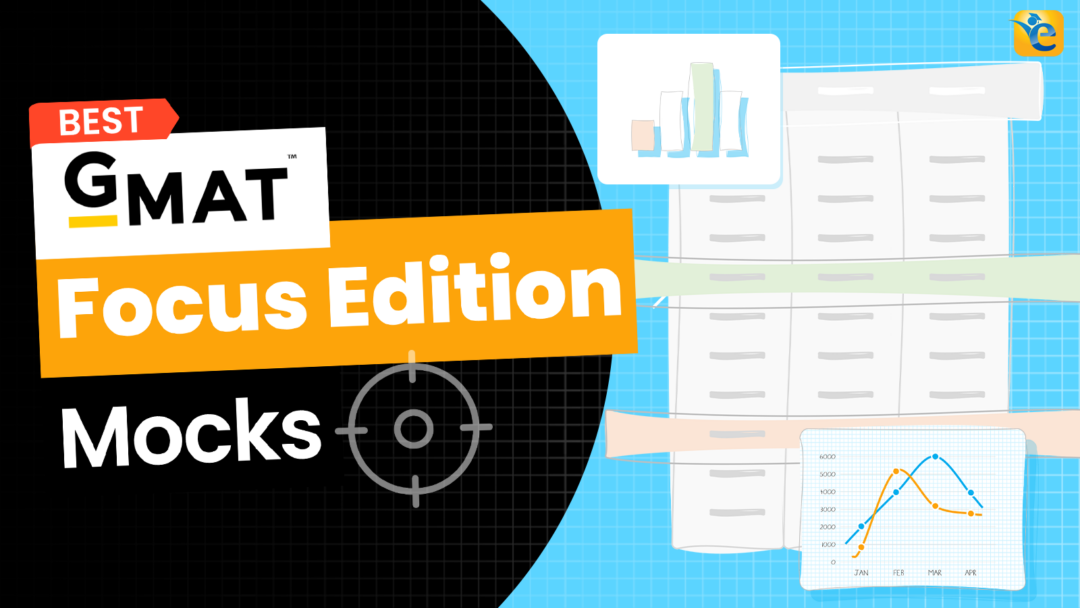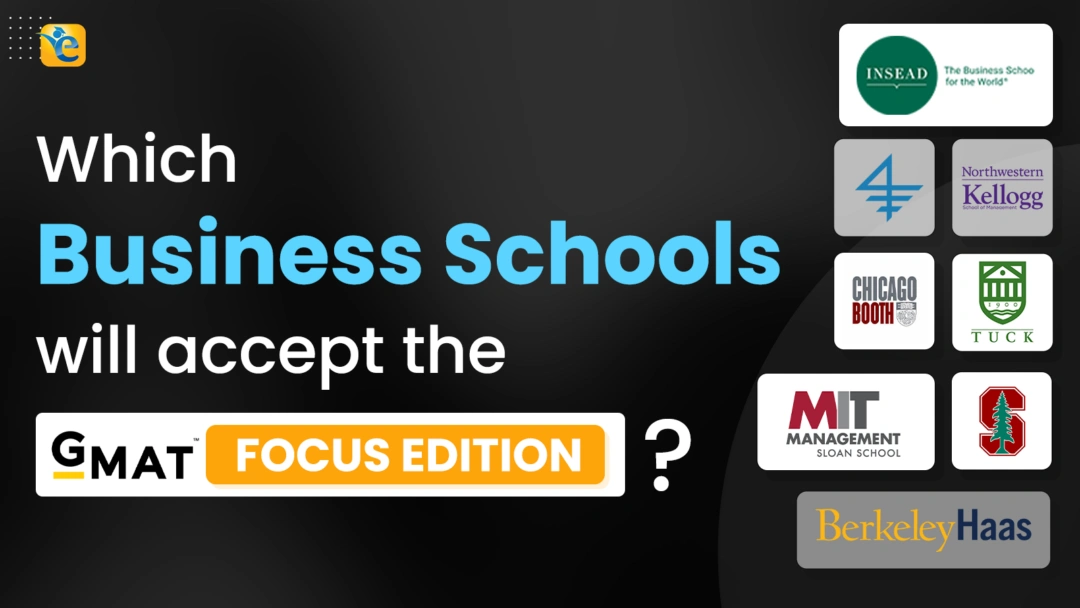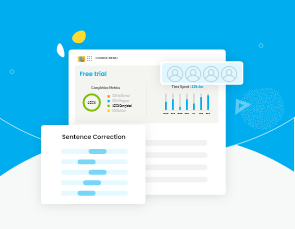The GMAT Focus Edition, launched in November 2023, has now become the exclusive version of the GMAT exam as of February 1, 2024. This significant transition marks a new era in business school admissions testing, reflecting the evolving needs of graduate management education and the changing landscape of business leadership.
The shift from the classic GMAT to the Focus Edition represents more than just a format change. The new exam has been specifically designed to assess skills that today’s business schools consider crucial for success in their programs and in modern business leadership. With a streamlined three-section format, the Focus Edition places greater emphasis on data literacy, critical reasoning, and real-world business applications.
The GMAT Focus Edition is now universally accepted by business schools worldwide, establishing itself as the standard admissions test for graduate management education. This widespread adoption reflects the business education community’s confidence in the exam’s ability to assess candidates’ readiness for advanced business studies.
Let us help you conquer the first step of getting into top business schools i.e., taking the GMAT. Take a free GMAT Focus mock to understand your baseline score and start your GMAT prep with our free trial. For any strategic advice for GMAT Focus or MBA Admissions, write to us at support@e-gmat.com.
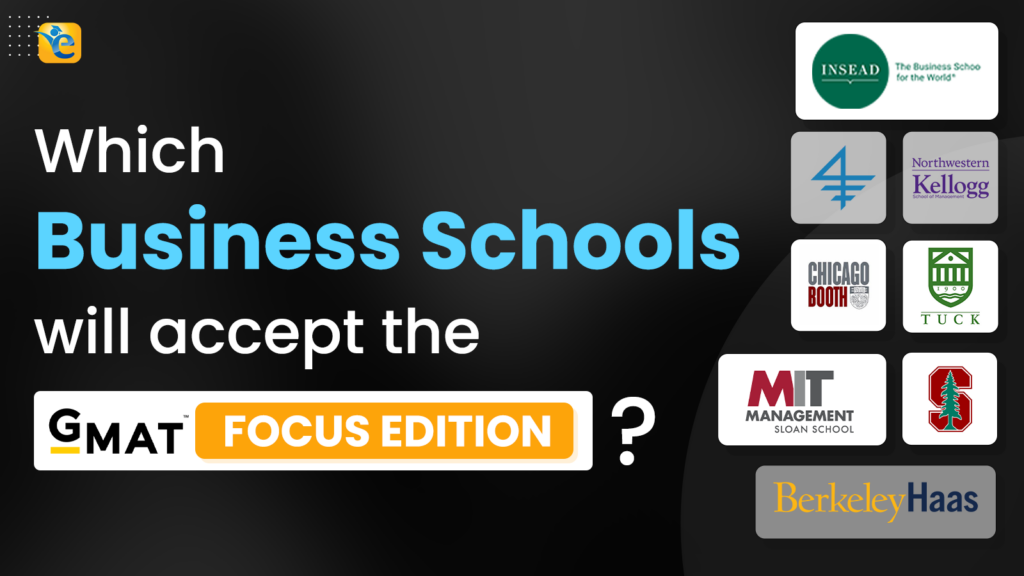
Top MBA Programs Accepting GMAT Focus Edition
Let’s examine the top business schools by category, starting with the M7 schools – widely recognized as the most selective business schools globally. Following that, we’ll look at other leading U.S. programs and prestigious international business schools. Understanding these groupings is crucial as each tier typically maintains different score expectations and evaluation approaches.
To see the deadline for B’schools admission, you can refer to our Article – “2024-2025 MBA application deadlines for Rounds 1, 2, 3, and 4”
M7 Schools
- Harvard Business School
- Stanford Graduate School of Business
- The Wharton School
- MIT Sloan School of Management
- Chicago Booth School of Business
- Northwestern Kellogg School of Management
- Columbia Business School
Other Leading US Programs
- Berkeley Haas School of Business
- Yale School of Management
- Duke Fuqua School of Business
- Michigan Ross School of Business
- Cornell Johnson Graduate School of Management
- UCLA Anderson School of Management
- UVA Darden School of Business
International Programs
- INSEAD
- London Business School
- Cambridge Judge Business School
- IESE Business School
- Oxford Saïd Business School
School-Specific Policies and Preferences
While all schools now accept the Focus Edition, individual institutions maintain their own policies regarding:
- Score validity periods (typically 5 years)
- Minimum score requirements
- Score reporting deadlines relative to application rounds
- Treatment of multiple test attempts
Did you know 9 out of 10 MBA Admissions decisions are made using a GMAT score? We can give you access to quality online content to prepare for GMAT. We have delivered 10x 700+ scores than the average GMATClub partner. Why don’t you take a free trial and judge it for yourself?
Understanding GMAT Focus Scoring
The GMAT Focus Edition introduces a comprehensive scoring system that reflects the exam’s evolved structure while maintaining its role as a crucial admissions criterion. Understanding this system is essential for strategic test preparation and application planning.
- Current GMAT Focus Edition Structure
The GMAT Focus Edition uses a total score range of 205-805 and consists of three key sections:
- Verbal Reasoning
- Quantitative Reasoning
- Data Insights
This represents a significant change from the previous format, notably with the elimination of AWA and transformation of the IR section into Data Insights. Each section contributes to your total score, with the new format emphasizing skills directly relevant to business school success.
- Comparison with Previous GMAT (10th Edition)
The previous GMAT operated on a 200-800 scale, and while this might seem similar, there are crucial differences:
- Different section composition and weighting
- New scoring algorithms
- Distinct score distribution patterns
- Modified assessment approaches
Important Note: Due to these fundamental differences, direct score comparisons between versions are not appropriate or meaningful. Instead use the concordance tables provided by GMAC to make direct comparisons
For detailed information about GMAT scoring and percentiles, you can refer to e-gmat’s comprehensive guide: [URL]
Understanding Score Concordance
The GMAT Score Concordance Table serves as the official tool for comparing performance between exam versions. This system is designed to provide:
- Fair comparison framework between old and new versions
- Percentile-based equivalency metrics
- Regular updates reflecting current test-taker populations
Key aspects of concordance interpretation include:
- Percentile Alignment Focus
- Use percentiles as primary comparison metric
- Understand equivalent percentile variations
- Consider score bands rather than exact numbers
- Score Interpretation Guidelines
- Schools use official concordance tables for evaluation
- Admissions committees are trained in both scoring systems
- Historical data supports consistent standards
This systematic approach to score interpretation not only ensures fair evaluation but also helps applicants understand where they stand in the competitive landscape of business school admissions. Understanding your score’s relative standing is crucial as different programs maintain varying expectations for their incoming classes.
Please click below to read our detailed article on GMAT Focus Edition Syllabus.
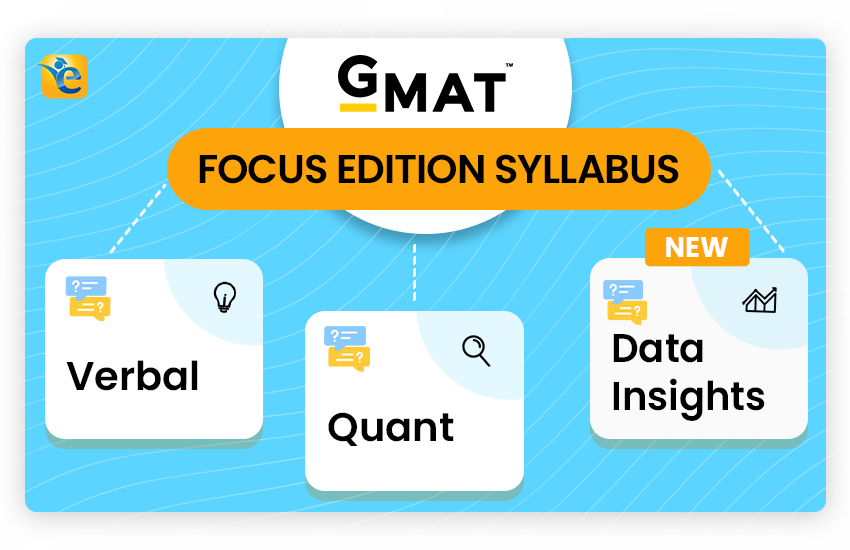
How to Prepare for it?
GMAC has introduced the GMAT Focus Edition with the intention of more effectively measuring “advanced critical reasoning and data literacy” skills essential for the future business landscape. But what does this mean for prospective test-takers?
Breaking it down, there are four major shifts in the GMAT Focus Edition syllabus that will influence how you prepare:
- The Integrated Reasoning section is swapped for Data Insights, which now makes up one-third of the test and has equal weight in the overall score.
- The Verbal section no longer includes Sentence Correction questions.
- The Quant section has done away with Geometry questions.
- The Analytical Writing Assessment, or the essay portion, has been removed.
Though the Focus Edition calls for some tweaks in how you prepare, core areas like Quantitative and Verbal Reasoning continue to align with the conventional GMAT. The introduced Data Insights section borrows question styles from Integrated Reasoning. Hence, to thrive, aspirants must still be proficient in problem-solving, Data Sufficiency, Critical Reasoning, and Reading Comprehension
GMAT Focus prep resources offered by e-GMAT:
Here is the overview of the GMAT prep material offered by e-GMAT:
- Comprehensive GMAT Focus Materials: We’ve updated our courses with GMAT Focus Edition content, allowing existing students to access these new resources without extra costs, ensuring continuity in quality education and support.
- Data Insights (Scholaranium) : In our continuous effort to provide you with unparalleled preparation material, DI Scholaranium brings to you a whopping 350 questions, each meticulously crafted and paired with solutions, dedicated to data insights. This is in addition to the existing 500 questions available in the DI course, summing up to a total of 850 original questions.
- GMAT Focus Mocks : We at e-GMAT are immensely proud to announce a groundbreaking advancement in GMAT preparation with the launch of our GMAT Focus Edition mocks., developed from extensive research and simulations, these mocks promise to deliver a test experience that closely mirrors the actual exam.
- Personalized Study Planner : We have created the data-driven Personalized Study Planner for the GMAT Focus Edition, offering customized study schedules, performance forecasts, and trackable goals to effectively navigate the updated exam demands.
In essence, to shine in the GMAT Focus, proficiency in quantitative reasoning, reading comprehension, critical thinking, and data interpretation is vital, much like the standard GMAT. The material you study might undergo some changes, but your preparation strategy should largely stay consistent.
For a deeper dive into how to best prepare for GMAT Focus, do refer to our comprehensive article on the GMAT Focus Study Plan.

Score Expectations and Program Requirements
The interpretation of GMAT Focus Edition scores varies significantly across business schools, with each tier of programs maintaining distinct expectations. While scores alone don’t guarantee admission, understanding these benchmarks helps in developing a strategic application approach.
- Score Expectations by Program Tier
- Top-Tier Programs (M7 Schools)
- Typical competitive range: 685+ (93rd percentile+)
- Strong preference for balanced section scores
- Scores below this range need exceptional compensation in other areas
- Top 15 Programs
- Competitive range: 665+ (77th percentile+)
- More flexibility for exceptional candidates
- Strong leadership experience may offset slightly lower scores
- Top 25 Programs
- Competitive range: 635+ (62nd percentile+)
- More holistic evaluation process
- Greater emphasis on professional experience and overall fit
Understanding Your Competitive Position
A unique feature of the GMAT Focus Edition is the Performance by Program & School comparison tool. This powerful resource helps you understand your standing among your direct competition:
- Comparative Analysis Tool
- Shows your percentile ranking against other applicants
- Includes data from past 5 years of test takers
- Specific to programs where you’ve sent scores
- Updates automatically with new score sends
- Strategic Insights
- Compare your performance to actual applicant pool
- More accurate than general class profiles
- Helps in making informed decisions about:
- Additional test attempts
- School selection strategy
- Application timing
Important Note: This valuable comparison data only becomes available after you send your official scores to programs, making your score-sending strategy even more crucial.
Special Considerations
Program-specific factors often influence how schools evaluate GMAT scores:
- Program-Specific Emphases
- Finance-focused programs: Higher quantitative expectations
- Marketing-focused programs: Balanced score requirements
- Technology-focused programs: Strong data insights section performance
- Candidate Background Factors
- Academic history influence on score expectations
- Work experience impact on score requirements
- Industry background considerations
- Application Timing
- Early round implications for score requirements
- Later round competitive considerations
- Waitlist and reapplication scenarios
Understanding these expectations and special considerations leads naturally to the next crucial aspect of the application process: how to effectively report and submit your scores to maximize your chances of admission.
Score Reporting Process
The GMAT Focus Edition provides a structured yet flexible system for sending your scores to business schools. Understanding how to leverage this system effectively, particularly the Performance by Program tool, can significantly impact your application strategy.
Initial Free Score Reports (48-Hour Window)
Your GMAT registration includes five free score reports, but timing is crucial. Once your official scores become available on mba.com, you’ll receive an email notification starting your 48-hour window. During this period, you can select up to five programs to receive your scores at no additional cost.
Strategic considerations for this window include:
- Score Review
- Take time to thoroughly evaluate your performance
- Compare scores with target school medians
- Assess likelihood of retaking the exam
- School Selection Strategy
- Prioritize top-choice programs
- Consider application deadlines
- Factor in timing for potential retakes
Additional Score Reporting Options
After the initial 48-hour window, you can still send your scores to additional schools through your mba.com account. While these reports incur a fee, they provide valuable insights through the Performance by Program comparison tool.
The Performance by Program feature offers a unique advantage in your application process. Once you send your scores to a program, you can see how your percentile ranking compares to other test-takers who applied to the same school over the past five years. This data provides crucial insights for:
- Understanding your competitive position
- Making informed decisions about retaking the exam
- Adjusting your school selection strategy
- Planning application timing
Score Report Management
Your score report contains comprehensive information about your performance. Each report shows:
- Scores from a single test date
- Section and total scores
- Percentile rankings
- Performance by Program comparisons
It’s important to note that once sent, score reports cannot be canceled or modified. Schools will see all scores from your selected test date, including any cancellations or policy violations.
School Selection Strategy
The strategic selection of schools for your GMAT Focus Edition score reports requires careful consideration of multiple factors. Within the crucial 48-hour free reporting window, you need to make informed decisions that align with your overall application strategy.
Prioritization Framework
When deciding which schools should receive your scores, consider this hierarchical approach:
- Dream Schools (1-2 schools)
- Programs at the very top of your list
- Schools where your score falls within their competitive range
- Consider sending even if slightly below median if other aspects of your profile are strong
- Target Schools (2-3 schools)
- Programs where your profile aligns well with class averages
- Schools where your GMAT score falls within the middle 80% range
- Institutions where you meet other key admission criteria
- Safety Schools (1-2 schools)
- Programs where your scores are above average
- Schools that consistently admit candidates with similar profiles
- Institutions where you exceed most admission criteria
Strategic Timing Considerations
The timing of your score sends should align with:
- Application Rounds
- Round 1 (September-October): Most competitive, requires earlier score submission
- Round 2 (January): Largest applicant pool, balanced admission odds
- Round 3 (March-April): Limited spots, higher score expectations
- Program Deadlines
- Factor in processing time for score reports
- Consider school-specific score validity requirements
- Plan around scholarship consideration deadlines
Post-Initial Reporting Strategy
After utilizing your free reports, develop a plan for:
- Additional score sends based on Performance by Program data
- Supplementary applications as needed
- Waitlist scenarios requiring score updates
- Alternative programs if initial applications need adjustment
This strategic approach to school selection maximizes the value of your GMAT Focus Edition score and positions you competitively across your chosen programs.
Conclusion
The GMAT Focus Edition represents a significant evolution in business school admissions testing. Here are the essential points for applicants to remember:
- Universal Acceptance
- All top business schools now accept the Focus Edition
- Schools are well-versed in interpreting new scores
- Admissions committees understand score concordance
- Strategic Score Management
- Utilize the 48-hour free reporting window wisely
- Consider timing relative to application rounds
- Plan score reporting aligned with school deadlines
- Competitive Positioning
- Focus on percentile rankings rather than absolute scores
- Understand program-specific expectations
- Consider scores within overall application strategy
Ready to tackle the GMAT Focus Edition? e-GMAT offers a Personalized Study Planner and top-notch Free GFE mock exam to help you prepare effectively. As the most reviewed GMAT prep company on GMAT Club with 2600+ reviews we’re here to support your GFE journey. Take advantage of our free trial with the best quality content. Start your path to success today!


